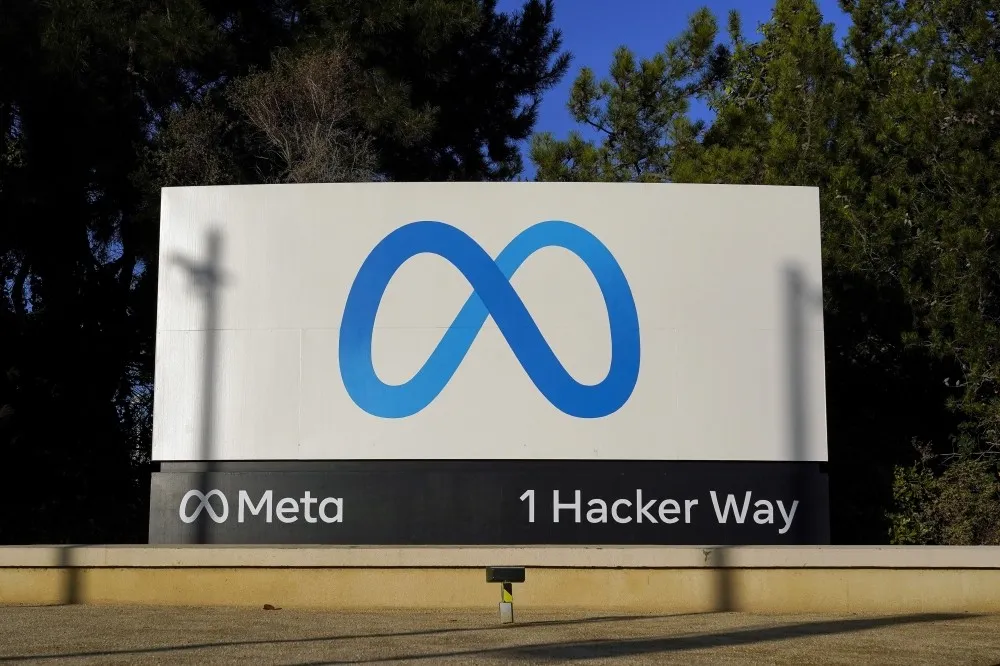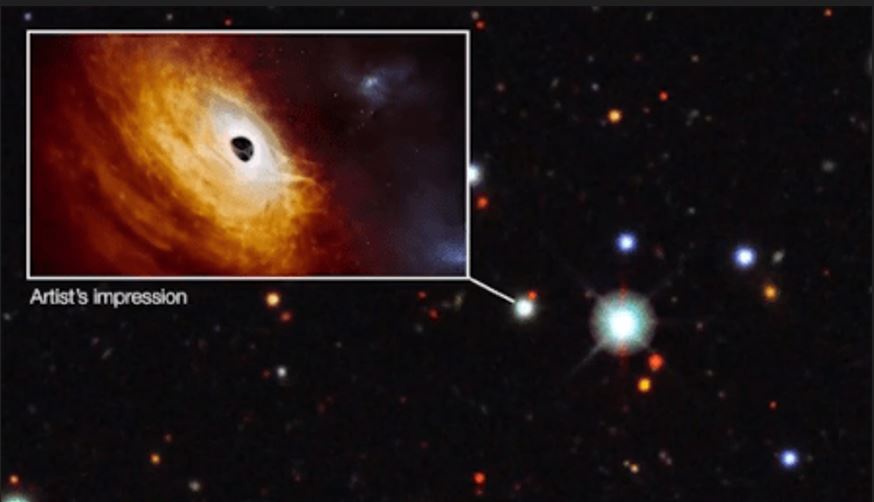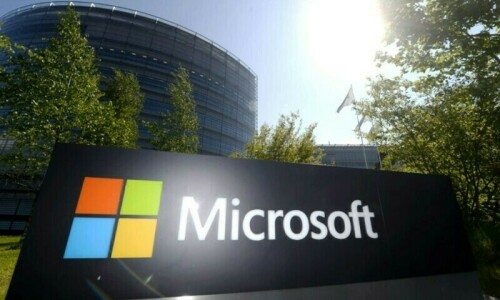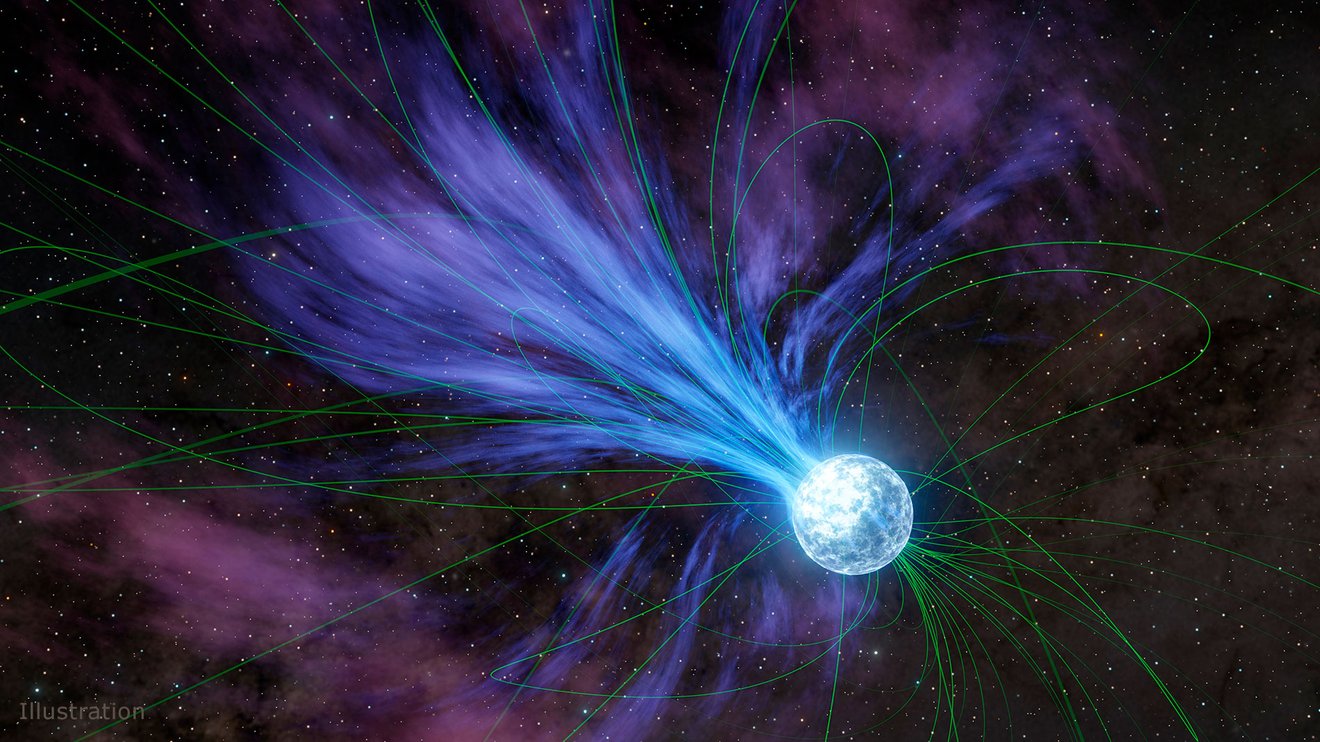Science & Technology


NEW YORK: Image creation tools powered by artificial intelligence from companies including OpenAI and Microsoft can be used to produce photos that could promote election or voting-related disinformation, despite each having policies against creating misleading content, researchers said in a report on Wednesday.
The Centre for Countering Digital Hate (CCDH), a nonprofit that monitors online hate speech, used generative AI tools to create images of US President Joe Biden laying in a hospital bed and election workers smashing voting machines, raising worries about falsehoods ahead of the US presidential election in November.
“The potential for such AI-generated images to serve as ‘photo evidence’ could exacerbate the spread of false claims, posing a significant challenge to preserving the integrity of elections,” CCDH researchers said in the report.
CCDH tested OpenAI’s ChatGPT Plus, Microsoft’s Image Creator, Midjourney and Stability AI’s DreamStudio, which can each generate images from text prompts.
The report follows an announcement last month that OpenAI, Microsoft and Stability AI were among a group of 20 tech companies that signed an agreement to work together to prevent deceptive AI content from interfering with elections taking place globally this year. Midjourney was not among the initial group of signatories.
CCDH said the AI tools generated images in 41 per cent of the researchers’ tests and were most susceptible to prompts that asked for photos depicting election fraud, such as voting ballots in the trash, rather than images of Biden or former US President Donald Trump.
ChatGPT Plus and Image Creator were successful at blocking all prompts when asked for images of candidates, said the report.
However, Midjourney performed the worst out of all the tools, generating misleading images in 65pc of the researchers’ tests, it said.
Some Midjourney images are available publicly to other users, and CCDH said there is evidence some people are already using the tool to create misleading political content. One successful prompt used by a Midjourney user was “donald trump getting arrested, high quality, paparazzi photo”.
In an email, Midjourney founder David Holz said that “updates related specifically to the upcoming US election are coming soon”, adding that images created last year were not representative of the research lab’s current moderation practices.
A Stability AI spokesperson said the startup updated its policies on Friday to prohibit “fraud or the creation or promotion of disinformation”. An OpenAI spokesperson said the company was working to prevent abuse of its tools, while Microsoft did not respond to request for comment.
AI use against cyberthreats
Meanwhile, the European Union is poised to use artificial intelligence and other tools to create a “cyber shield” protecting critical infrastructure and sectors from threats, officials said on Wednesday.
The move is enshrined in a new piece of legislation, the Cyber Solidarity Act, that was agreed overnight by negotiators from EU member states and the European Parliament.
The law, which needs a final sign-off from the parliament and the European Council, “will leverage state-of-the-art tools and infrastructures, such as artificial intelligence and advanced data analytics, to swiftly detect cyberthreats and incidents,” a European Commission statement said.
It will do that through the set-up of a European Cybersecurity Alert System designed to give real-time information to authorities.
The initiative comes as EU countries face rising threats from cyber sabotage, with infrastructure increasingly linked online and AI potentially allowing bad actors to better exploit weaknesses.
“It comes at a crucial time for EU cybersecurity, as the cyberthreat landscape in the EU continues to be impacted by geopolitical events,” the statement said.
A Cybersecurity Emergency Mechanism would also be established under the law to oversee preparedness in health, energy and other critical sectors.
It would be able to tap “trusted providers” in an EU Cybersecurity Reserve to help EU institutions or countries — or even outside nations associated with the bloc — counter large-scale attacks.
To that end, the EU negotiators agreed an update to an existing Cybersecurity Act allowing the adoption of European certification schemes such providers could qualify for.
“The Cyber Solidarity Act is a crucial step to establish a European cyber shield,” said EU internal market commissioner Thierry Breton.
The enhanced cooperation it will bring will contribute to “the security of our citizens,” he said.

KUWAIT: Have you been forcibly logged out of your Facebook account? You’re not alone.
In Kuwait, users started experiencing a glitch on Tuesday at 6:30 pm local time. Widespread technical problems impacted Meta’s Facebook and Instagram, leading many users to encounter errors when attempting to access these social media platforms.
Users encountered various issues, including unexpected logouts from Facebook. When trying to log back in, they received error messages like “Something went wrong. Please try again.” The number of error reports surged around 10:30 a.m. ET on Tuesday, surpassing 500,000 by 11 a.m., according to Downdetector, a monitoring service.
Additionally, Instagram users in Kuwait reported problems with their feeds not refreshing. The disruption also affected Meta’s Messaging platform and Threads, its Twitter-like app introduced the previous year.

Rocket maker SpaceX on Tuesday will appear before a US labour board judge to face claims that it fired eight engineers for criticising CEO Elon Musk and accusing him of sexist conduct in a letter to company executives.
The case before National Labor Relations Board Administrative Law Judge Sharon Steckler in Los Angeles prompted SpaceX to file a lawsuit in January seeking to block it from going forward by claiming the board’s in-house enforcement proceedings violate the US Constitution.
The NLRB’s general counsel, which acts as a prosecutor, claims SpaceX violated US labour law by firing the engineers in 2022 after they circulated a letter accusing Musk of sexist conduct and claiming the company tolerated discrimination against women.
SpaceX is accused of violating the National Labor Relations Act, which protects workers’ rights to band together and advocate for better working conditions.
The engineers have separately filed complaints with a California civil rights agency accusing SpaceX of tolerating sex discrimination and retaliating against workers who complained.
SpaceX has denied wrongdoing while attacking the labour board’s core functions in the lawsuit, which it filed in Texas federal court. A judge last month transferred the case to California, citing the fact that the labour board case was being heard there.
SpaceX is challenging that decision in an appeals court, and the California judge on Monday sent the case back to Texas pending the outcome of the appeal.
Kayla Blado, a spokeswoman for the board, said Tuesday’s hearing “will be mostly procedural,” focusing on the scope of subpoenas the board can issue to obtain information from SpaceX and a schedule for future hearings. Steckler will not hear testimony or opening statements, Blado said.
If SpaceX loses, it could be ordered to reinstate the workers and compensate them for lost pay and benefits. Steckler’s decision in the case can be appealed to the five-member board and then a federal appeals court.
SpaceX did not respond to a request for comment. The company is represented by lawyers from law firm Morgan Lewis & Bockius including John Ring, who was the chairman of the NLRB during the Trump administration.
SpaceX had asked to put off the hearing pending the company’s bid in the Texas court to block the labour board case from moving forward. An NLRB regional director last month denied that motion and the five-member board, which has one vacancy, upheld that decision in a single-page ruling.
In its lawsuit, the company claims the labour board’s administrative process for hearing cases involving illegal labour practices violates its constitutional right to a jury trial. SpaceX also says limits on the president’s ability to remove administrative judges and board members are unconstitutional.
Starbucks, Amazon.com and Trader Joe’s, all of which are facing nationwide union organising campaigns, have raised similar arguments in pending board cases.
The labour board has said in court filings that removal protections similar to those for board judges and members have been upheld by the US Supreme Court and that the right to a jury trial does not extend to cases brought under federal labour law.

KARACHI: Researchers have found the brightest object in the universe, which is 500 trillion times brighter than the Sun.
According to the European Southern Observatory (ESO), the newly discovered quasar is the most luminous object ever observed, and it is powered by a massive blackhole which is eating a mass equivalent to one Sun per day, making it the fastest-growing black hole to date.
Quasars are the bright cores of distant galaxies, and they are powered by supermassive black holes. The black hole in this record-breaking quasar is growing in mass by the equivalent of one Sun per day, making it the fastest-growing black hole to date, according to ESO.
The Guardian reported that a group of scientists at the Australian National University first spotted the quasar at an observatory in Coonabarabran town near Australia’s New South Wales state. The discovery was then confirmed using ESO’s Very Large Telescope.
“We have discovered the fastest-growing black hole known to date. It has a mass of 17 billion Suns and eats just over a Sun per day. This makes it the most luminous object in the known Universe,” Christian Wolf, the lead author of the study, was quoted as saying by ESO.
The quasar, known as J0529-4351, is so far away from Earth that its light took over 12 billion years to reach us.
Another research said the brightest quasar had been remarkably hiding in plain sight.
“It is a surprise that it has remained unknown until today when we already know about a million less impressive quasars. It has literally been staring us in the face until now,” the study’s co-author, Christopher Onken, told ESO.
According to researchers, studies into distant supermassive black holes could answer some of the most prevalent questions about galaxies and their evolution and solve some of the mysteries of the early Universe.

State-backed hackers from Russia, China, and Iran have been using tools from Microsoft-backed OpenAI to hone their skills and trick their targets, according to a report published on Wednesday.
Microsoft said in its report it had tracked hacking groups affiliated with Russian military intelligence, Iran’s Revolutionary Guard, and the Chinese and North Korean governments as they tried to perfect their hacking campaigns using large language models.
Those computer programmes, often called artificial intelligence, draw on massive amounts of text to generate human-sounding responses. The company announced the find as it rolled out a blanket ban on state-backed hacking groups using its AI products.
“Independent of whether there’s any violation of the law or any violation of terms of service, we just don’t want those actors that we’ve identified that we track and know are threat actors of various kinds we don’t want them to have access to this technology,” Microsoft Vice President for Customer Security Tom Burt told Reuters in an interview ahead of the report’s release.
Russian, North Korean, and Iranian diplomatic officials didn’t immediately return messages seeking comment on the allegations.
China’s US embassy spokesperson Liu Pengyu said it opposed “groundless smears and accusations against China” and advocated for the “safe, reliable and controllable” deployment of AI technology to “enhance the common well-being of all mankind.”
The allegation that state-backed hackers have been caught using AI tools to help boost their spying capabilities is likely to underline concerns about the rapid proliferation of the technology and its potential for abuse.
Senior cybersecurity officials in the West have been warning since last year that rogue actors were abusing such tools, although specifics have, until now, been thin on the ground.
“This is one of the first, if not the first, instances of an AI company coming out and discussing publicly how cybersecurity threat actors use AI technologies,” said Bob Rotsted, who leads cybersecurity threat intelligence at OpenAI.
OpenAI and Microsoft described the hackers’ use of their AI tools as “early-stage” and “incremental.”
Burt said neither had seen cyber spies make any breakthroughs.
“We really saw them just using this technology like any other user,” he said.
The report described hacking groups using the large language models differently.
Hackers alleged to working on behalf of Russia’s military spy agency, widely known as the GRU, used the models to research “various satellite and radar technologies that may pertain to conventional military operations in Ukraine”, Microsoft said.
Microsoft said North Korean hackers used the models to generate content “that would likely be for use in spear-phishing campaigns” against regional experts.
Iranian hackers also leaned on the models to write more convincing emails, Microsoft said, at one point using them to draft a message attempting to lure “prominent feminists” to a booby-trapped website.
The software giant said Chinese state-backed hackers were also experimenting with large language models, for example, to ask questions about rival intelligence agencies, cybersecurity issues and “notable individuals”.
Neither Burt nor Rotsted would be drawn on the volume of activity or how many accounts had been suspended. And Burt defended the zero-tolerance ban on hacking groups — which doesn’t extend to Microsoft offerings such as its search engine Bing — by pointing to the novelty of AI and the concern over its deployment.
“This technology is both new and incredibly powerful,” he said.

Using two of the agency’s X-ray telescopes, researchers were able to zoom in on a dead star’s erratic behavior as it released a bright, brief burst of radio waves.
What’s causing mysterious bursts of radio waves from deep space? Astronomers may be a step closer to providing one answer to that question. Two NASA X-ray telescopes recently observed one such event – known as a fast radio burst – mere minutes before and after it occurred. This unprecedented view sets scientists on a path to better understand these extreme radio events.
While they only last for a fraction of a second, fast radio bursts can release about as much energy as the Sun does in a year. Their light also forms a laserlike beam, setting them apart from more chaotic cosmic explosions.
Because the bursts are so brief, it’s often hard to pinpoint where they come from. Prior to 2020, those that were traced to their source originated outside our own galaxy – too far away for astronomers to see what created them. Then a fast radio burst erupted in Earth’s home galaxy, originating from an extremely dense object called a magnetar – the collapsed remains of an exploded star.
In October 2022, the same magnetar – called SGR 1935+2154 – produced another fast radio burst, this one studied in detail by NASA’s NICER (Neutron Star Interior Composition Explorer) on the International Space Station and NuSTAR (Nuclear Spectroscopic Telescope Array) in low Earth orbit. The telescopes observed the magnetar for hours, catching a glimpse of what happened on the surface of the source object and in its immediate surroundings, before and after the fast radio burst. The results, described in a new study published Feb. 14 in the journal Nature, are an example of how NASA telescopes can work together to observe and follow up on short-lived events in the cosmos.
SUBSCRIBE TO THE NEWSLETTER
The burst occurred between two “glitches,” when the magnetar suddenly started spinning faster. SGR 1935+2154 is estimated to be about 12 miles (20 kilometers) across and spinning about 3.2 times per second, meaning its surface was moving at about 7,000 mph (11,000 kph). Slowing it down or speeding it up would require a significant amount of energy. That’s why study authors were surprised to see that in between glitches, the magnetar slowed down to less than its pre-glitch speed in just nine hours, or about 100 times more rapidly than has ever been observed in a magnetar.
“Typically, when glitches happen, it takes the magnetar weeks or months to get back to its normal speed,” said Chin-Ping Hu, an astrophysicist at National Changhua University of Education in Taiwan and the lead author of the new study. “So clearly things are happening with these objects on much shorter time scales than we previously thought, and that might be related to how fast radio bursts are generated.”
Spin Cycle
When trying to piece together exactly how magnetars produce fast radio bursts, scientists have a lot of variables to consider.
For example, magnetars (which are a type of neutron star) are so dense that a teaspoon of their material would weigh about a billion tons on Earth. Such a high density also means a strong gravitational pull: A marshmallow falling onto a typical neutron star would impact with the force of an early atomic bomb.
The strong gravity means the surface of a magnetar is a volatile place, regularly releasing bursts of X-rays and higher-energy light. Before the fast radio burst that occurred in 2022, the magnetar started releasing eruptions of X-rays and gamma rays (even more energetic wavelengths of light) that were observed in the peripheral vision of high-energy space telescopes. This increase in activity prompted mission operators to point NICER and NuSTAR directly at the magnetar.
“All those X-ray bursts that happened before this glitch would have had, in principle, enough energy to create a fast radio burst, but they didn’t,” said study co-author Zorawar Wadiasingh, a research scientist at the University of Maryland, College Park and NASA’s Goddard Space Flight Center. “So it seems like something changed during the slowdown period, creating the right set of conditions.”
What else might have happened with SGR 1935+2154 to produce a fast radio burst? One factor might be that the exterior of a magnetar is solid, and the high density crushes the interior into a state called a superfluid. Occasionally, the two can get out of sync, like water sloshing around inside a spinning fishbowl. When this happens, the fluid can deliver energy to the crust. The paper authors think this is likely what caused both glitches that bookended the fast radio burst.
If the initial glitch caused a crack in the magnetar’s surface, it might have released material from the star’s interior into space like a volcanic eruption. Losing mass causes spinning objects to slow down, so the researchers think this could explain the magnetar’s rapid deceleration.
But having observed only one of these events in real time, the team still can’t say for sure which of these factors (or others, such as the magnetar’s powerful magnetic field) might lead to the production of a fast radio burst. Some might not be connected to the burst at all.
“We’ve unquestionably observed something important for our understanding of fast radio bursts,” said George Younes, a researcher at Goddard and a member of the NICER science team specializing in magnetars. “But I think we still need a lot more data to complete the mystery.”
More About the Mission
A Small Explorer mission led by Caltech and managed by NASA’s Jet Propulsion Laboratory in Southern California for the agency’s Science Mission Directorate in Washington, NuSTAR was developed in partnership with the Danish Technical University and the Italian Space Agency (ASI). The spacecraft was built by Orbital Sciences Corp. in Dulles, Virginia. NuSTAR’s mission operations center is at the University of California, Berkeley, and the official data archive is at NASA’s High Energy Astrophysics Science Archive Research Center at NASA’s Goddard Space Flight Center. ASI provides the mission’s ground station and a mirror data archive. Caltech manages JPL for NASA.
For more information about the NuSTAR mission, visit:
https://www.nustar.caltech.edu/
NICER, an Astrophysics Explorer Mission of Opportunity, is an external payload on the International Space Station. NICER is managed by and operated at NASA’s Goddard Space Flight Center; its data is archived at NASA’s HEASARC. NASA’s Explorers program provides frequent flight opportunities for world-class scientific investigations from space utilizing innovative, streamlined, and efficient management approaches within the heliophysics and astrophysics science areas.
For more information about the NICER mission, visit:
https://www.nasa.gov/nicer

According to Nasa, exoplanet was discovered by Transiting Exoplanet Survey Satellite, launched in 2018
A "super-Earth" exoplanet, TOI-715 b, was discovered 137 light-years away from Earth, prompting further exploration into its life-sustaining conditions, the National Aeronautics and Space Administration (Nasa) announced.
Nasa confirmed that scientists found the planet — about one and a half times as wide as Earth — orbits within a conservative "habitable zone" around its parent star.
The space agency defines a habitable zone as the distance from a star that allows liquid water to form on a planet's surface.
Astronomers noted that other factors are also necessary for a suitable atmosphere, though the planet’s placement in the zone puts it in a "prime position" from its parent star, The Hill reported.
The parent star of the planet is a red dwarf with a tighter orbit, allowing it to "crowd closer" and have a year of 19 Earth days, making it easier to detect and more frequently observed, according to the agency.
According to Nasa, the planet was discovered by the Transiting Exoplanet Survey Satellite (TESS), launched in 2018.
TESS has discovered a series of other habitable zone exoplanets that can be more closely observed by Nasa’s James Webb Space Telescope.
A second planet, the size of Earth, may also be part of the newfound system, and it may be located just inside the conservative habitable zone.
Nasa said that if this is verified, it will be the smallest planet in the habitable zone that TESS has found yet.


